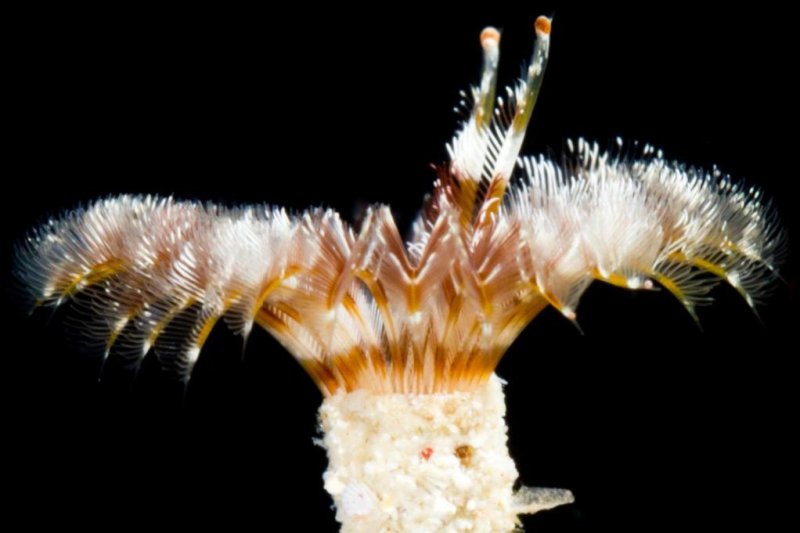Fan worms boast a spread of feather-like tentacles, a few of which feature compounds eyes -- eyes new research suggests evolved independently of the creature's other visual systems. Photo by Michael Bok/Bristol University
Aug. 1 (UPI) -- Genetic analysis of the fan worm's unique visual anatomy suggests the worm's multiple eyes evolved independently.
Fan worms are named for the round spread of feather-like tentacles, which help the creatures sift for food and breathe. A few of the tentacles feature eyes.
When scientists sequenced the genes responsible for the development of these tentacle eyes, they found they evolved independently of the worm's other visual systems.
The tentacle eyes aren't all that complex. They don't render sophisticated images, but operate like a shadow or motion detector. The eyes can alert the worm to the presence of an encouraging predator, triggering a rapid flight response.
After collecting specimens of Megalomma interrupta, a fan worm species found among the Great Barrier Reef, researchers studied the genes linked with tentacle eye formation using a method called transcriptomic sequencing. Their analysis revealed the presence of several light-sensitive cellular signalling components.
"Surprisingly, we found an unusual set of light-sensing genes, previously only seen in simple photoreceptors in the brains of some invertebrates," researcher Michael Bok, an ecologist at the University of Bristol, said in a news release. "It seems that the eyes on the tentacles of fan worms evolved independently from all other visual systems in order to support the needs of their unusual filter-feeding lifestyle."
Bok and colleagues published their findings this week in the journal Current Biology, but their research is not done.
"Many questions remain about the evolution and function of these eyes," Bok said. "Due to their unique evolutionary history and neural circuitry these eyes could offer many clues about the emergence of new sensory systems and how the first eyes may have arisen."















